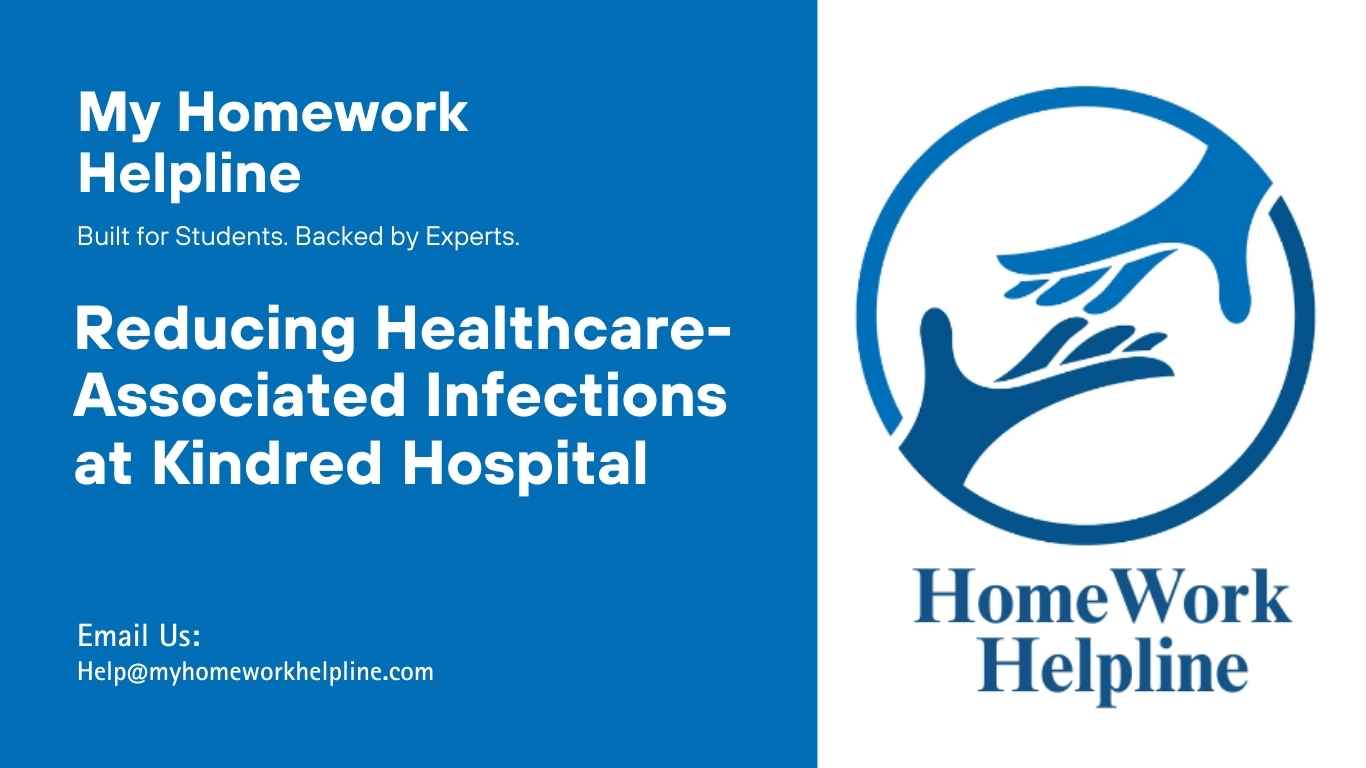Evaluating Infection Prevention in Kindred Hospital: An EBP Project
Implementing evidence-based practice (EBP) is crucial for ensuring healthcare quality, and evidence must be rigorously analyzed and applied while assessing change or outcome (Larsen et al., 2019). Collecting dependent and independent variables in an EPB project is essential for this evaluation (Galiano et Al., 2020). This EBP project assesses Kindred Hospital’s use of infection prevention and control techniques to lower healthcare-associated infections. This long-term facility, which has a capacity of 66 beds, offers patients with significant medical conditions specialized treatment for longer. Patients residing in long-term care facilities (LTCFs) are well-known to have an increased risk of acquiring healthcare-associated infections (HAIs) (Nguyen et al., 2020).
The project focuses on how infection prevention and control (IPC) standard precautions could decrease healthcare-associated viral respiratory infections(HAVRI) and the negative health complications linked to the condition among patients with acute respiratory failure. The dependent variables are the incidence of HAVRIs) that patients acquire while receiving care in the hospital and the frequency of adverse health outcomes connected to HAVRIs, such as longer hospital stays, higher healthcare costs, and higher mortality rates.
Struggling to complete your infection prevention essay or EBP project? At My Homework Helpline, we provide expert nursing assignment assistance and professional homework support, delivering human-written work with plagiarism and AI originality reports. You can improve your grades and complete your projects with confidence by visiting our professional nursing homework help for tailored guidance, assignment support, and high-quality research papers.
Examining medical records can be used in determining their prevalence and developing focused, quantifiable measures to lower their risk. The independent variables I would use includes the assessing the application of infection prevention and control measures, such as hand hygiene, respiratory hygiene, and contact precautions, to reduce the risk of HAVRIs and the assessment of healthcare worker characteristics, such as their level of training, experience, and adherence to IPC standard precautions. Standardized observation tools and checklists capture important IPC practices, surveys, and questionnaires collect demographic data, education levels, training, and experience. The data can inform the development of interventions to enhance IPC standard precautions and lower the risk of HAVRIs among patients with acute respiratory failure
References
Galiano, A., Simonetti, M., Quiroga, N., & Larrain, A. (2020). Development, implementation and evaluation of an evidence‐based practice model in a new hospital in Chile. Journal of Nursing Management, 28(7), 1748-1757. https://doi.org/10.1111/jonm.13134
Larsen, C. M., Terkelsen, A. S., Carlsen, A. F., & Kristensen, H. K. (2019). Methods for teaching evidence-based practice: A scoping review. BMC Medical Education, 19(1). https://doi.org/10.1186/s12909-019-1681-0
Nguyen, L., Megiddo, I., & Howick, S. (2020). Challenges of infection prevention and control in Scottish long-term care facilities. Infection Control & Hospital Epidemiology, 41(8), 943-945. https://doi.org/10.1017/ice.2020.113

